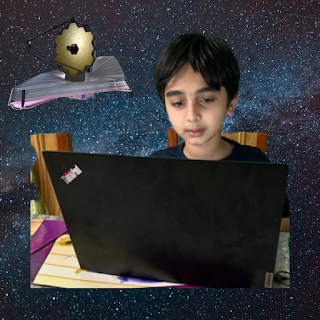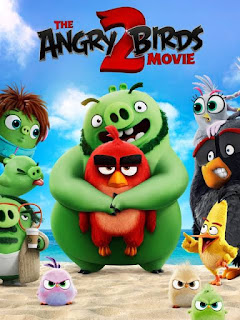James Webb Space Telescope : Everything you want to know
What did the galaxy look like 4.6 billion years ago? Well, we don’t have to guess. Thanks to the James Webb Space Telescope built by NASA we know exactly how it looked and it is unbelievable!
When I said Webb, don’t think of a spider! While you and I were eating pizza and watching tv, thousands of smart scientists worked on creating the most powerful telescope in the world to help us understand space better.
Now I know what you must be thinking, What is James Webb? Who is he?
The James Webb Space Telescope is the successor of the Hubble space telescope. It has also been called “The next generation of space telescopes”. It has a huge camera. Does anyone have a phone camera that's 6.5 meters across? No right? Well that's the length of the main camera on the James Webb Space Telescope, the largest mirror in space. It also orbits the sun every 182.5 earth days or 6 earth months. It was made by NASA. It is named after James Webb who was a very good NASA administrator.
I talked about the Hubble Space Telescope being the predecessor to James Webb. Let me show the differences of it:
Webb’s Primary mirror is 3 times larger than Hubble’s.
Webb can take images in the infrared spectrum while Hubble takes images in visible and UV light.
Webb orbits the sun while Hubble orbits the Earth
So Webb launched in September 2021 and now finally after 6 months its first images have been sent: Let me show them and explain them.
This is SMACS0723. The photo above is the highest resolution photo of deep space that has ever been taken and the light captured by Webb in this photo has traveled for more than 13 billion years.
Wasp 96-B
WASP-96 b is a giant planet outside Earth’s solar system that NASA says is composed mainly of gas. The planet, located nearly 1,150 light-years away, orbits its star every 3.4 days. It has about half the mass of Jupiter, and its discovery was announced in 2014.
Southern Ring Nebula
The Southern Ring Nebula, also known as the “Eight-Burst” nebula, is what is known as a planetary nebula: an expanding cloud of gas, surrounding a dying star. It is nearly half a light-year in diameter and is located about 2,000 light-years from Earth.
Stephan’s Quintet
Stephan’s Quintet, also known as Hickson Compact Group 92, exists about 290 million light-years away, and four of the five galaxies within the quintet are what NASA describes as locked in a cosmic dance of repeated close encounters. This, too, was captured within both near- and mid-infrared.
Carina Nebula
The Carina Nebula is one of the largest and brightest nebulae that is visible in the night sky. It is located about 7,600 light-years away in the southern constellation of Carina. The Carina Nebula is home to many massive stars, several times larger than the Sun. This photo from Webb reveals a host of stars that had previously not been visible.
I really like these images as they show us more about the universe. I hope NASA shows more amazing images like this and maybe someday we will go to these places but for now we are unfolding the universe with James Webb.
Bibliography
People who worked-https://www.jwst.nasa.gov/content/meetTheTeam/index.html
Size of Webb Camera-https://webb.nasa.gov/content/observatory/ote/mirrors/index.html
Webb Orbit-https://webb.nasa.gov/content/about/orbit.html
Webb vs Hubble-Webb vs Hubble









Comments
Post a Comment